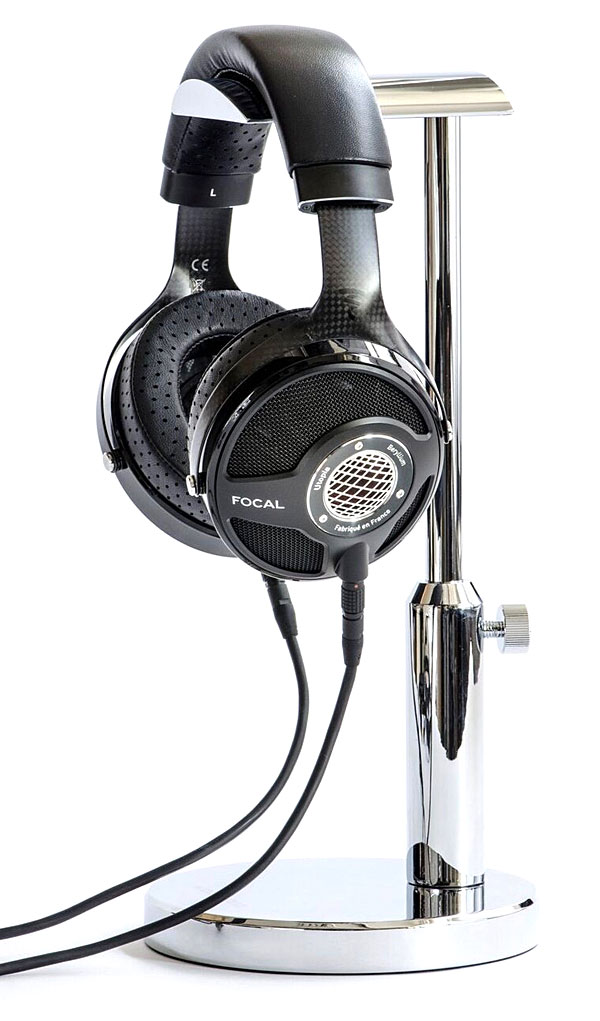| Columns Retired Columns & Blogs |
The spirit of the Michell Syncro is resurrected!
http://www.iavscanada.com/wordpress/wp-content/uploads/Innovative-Audio-J.A.-Michell-Syncro-F1.jpg
It seemed as if the Roksan Radius 7/Nima/Corus Silver combo ignored the worst traits of all these 'tables, scooped up the best, and plunked them down on my paint-smeared equipment rack in red, blue, and green light. The 7 made all my records sound extraordinarily rich and deep and clearly purposed. It did not do BIG or wham-slam as well as the Technics, or give the illusion of being scientifically precise as well as the Acoustic Signature. But, dagnab it: listening to music on the Radius 7 was like falling into a dense musical abyss. Recordings felt and sounded like bubbling cauldrons of extremely fine-grained musical information. Very analog-rich, energy charged—and totally understated.
Conclusions
Roksan's record-playing system of Radius 7 turntable, Nima tonearm, and Corus Silver cartridge earned my complete respect and deep affection. Its richly toned midrange and deep, deep bass were highly seductive. Its grainless highs were never anything but refined. To me, this "Made in London" (Roksan's slogan) record-playing machine felt like a fine Lotus motorcar that I would proudly drive down Paris's Quai de Jemmapes. The Radius 7 is an analog product of refined British distinction. If you fancy Taylors of Harrogate tea or Gordon's gin, you're sure to love playing black discs on this moderately priced Roksan rig. I did.

Focal Utopia headphones
Besides the head-wrapping encumbrance, the biggest difference for me between listening through headphones and listening through loudspeakers is how I regard the imaging. With my best headphones and my eyes closed, Amy Winehouse sings about rehab right near me, very close and seemingly full size. However, as soon as I stop dreaming and think consciously about it, Winehouse and her mix engineer's perverse concept of a soundstage collapse, and both suddenly seem to be very small and inside my head.
At the recording session, Winehouse was in a padded booth with a cigarette and a cocktail, wearing a pair of headphones. Her musicians were someplace else altogether. On Back to Black (LP, Universal Republic B000899401), her voice sounds dry, compressed, and much bigger than the rest of the musicians, who seem almost randomly distributed in the mix but less compressed. Until my mind fully adjusts, these oxymoronic inconsistencies of stereophonic audio are always disorienting distractions.
Through speakers, Winehouse still sounds dry and compressed, but now she's about three-fourths her natural height of 5' 2½", and her band is about a tenth its actual size and positioned about 7' in front of me, superimposed on my equipment rack. This so-called imaging feels fake and ghostly, like an amateur holograph. But I'm used to it.
I remember, as a child, hearing Bing Crosby singing from some dark place inside a box on the kitchen table, and Bob Dylan singing from inside the dashboard of my car. Even then, this seemed a little bizarre. These carnivalesque but universally accepted forms of audio reproduction are paradoxical and disconcerting, but over decades, our needy music-loving brains have adapted surprisingly well to such ridiculous aural spectacles.
My point: In whatever form, enjoying recorded music always entails significant amounts of imagination, suspended disbelief, and the cultivated ability to adapt our minds, all so that we can overlook—even enjoy—the absurdity of audio imaging.
Similarly, today's new super-high-quality headphones beg their users to be patient and imaginative, and to learn to listen like true connoisseurs—just as they have in the past to Edison phonographs, radios, and stereos.
Entering Utopia
I was surprised to discover that Focal's new Utopia headphones ($3999) had an unprecedented ability to distract me from such audio paradoxes. They accomplished this with a simple, gut-level realism that is rare in high-end audio. With many recordings, the Utopias, which are finely crafted in France, conveyed enough of music's temporal and corporeal energies to make me think I was in an actual room with real musicians. This surprising realism had a way of directing my mind into the musical performance and showing me its basic form and energy distribution, which in turn kept my mind from reverting to the physicality of the headset. How could this be?
Design and Construction
Much of the Utopias' charm stems from the fact that Focal has engineered these fully open-backed, circumaural headphones to sit easily on the head. The "ultra-soft lambskin leather from New Zealand" with which Focal covers the earcups and headband felt gentle and caressing. The ultralight carbon-fiber yoke and the angled, asymmetrical fasteners on the earcups let the Utopias rest naturally on my skull.

The Utopias were supercomfortable but not superlight—they weigh 1.08 lbs (490gm)—but their exceptional build quality and physical geometry let them feel light. Long listening sessions and watching entire films were possible with almost no discomfort. Their 13.1' (4m) cable, terminated with a Neutrik ¼" stereo plug and two shielded Lemo earcup connectors, helped me forget I was connected. I could let my mind wander and wonder.
Comfort and convenience are important, but the primary cause of the Utopias' exceptional realism is surely the 1.575" (40mm), full-range beryllium-dome driver with its 0.98" (25mm), 80-ohm voice-coil. Uniquely, the Utopia's dome has no voice-coil former: instead, the coil is attached directly to the dome, in a crease near the edge where the dome meets its surround. This extra-light dome-coil assembly is mounted on a rigid open frame and charged by a magnetic field generated by six neodymium magnets. Besides reducing moving mass, losing the former and attaching the coil directly to the driver's perimeter should aid in generating more linear pistonic motion through the dome's long excursions—which, in turn, should contribute to greater fidelity, tighter deep bass, and finer detail. Another possible advantage of this formerless driver design is that there are no stators, vents, or dense magnet structures to block or disfigure the dome's wavelaunch. The Utopia driver is completely open-backed, and therefore less likely to suffer from frequency-dependent loading or comb-filter effects.
Whatever the cause, I had never understood or peered more deeply or three-dimensionally into "A Very Cellular Song," from the Incredible String Band's The Hangman's Beautiful Daughter (LP, Elektra EKS-74021), than I did with the Utopias and the Linear Tube Audio microZOTL integrated headphone amplifier. Through the Focals, the vocal and instrumental tones of this magical Scottish folk group were beyond exemplary. Articulation of the voices was the best I've ever experienced. Detail and color were abundant. Musical expressiveness seemed magnified and brought forward for my attention. Most amazingly, soundstage information extended not just horizontally, as through most headphones and speakers, but noticeably in the vertical dimension. Because of this, performers sounded larger and more tangible than through any other headphones I've used.
Moving now from Scotland to Wales to California . . .
The experience of listening to Lustmord's Purifying Fire (CD, Soleilmoon SOL 98) was big—really BIG—and intensely physical. You know how imaging can sometimes go above and behind your head? You know that effect in electronic music, where the digitally expanded bass notes (in this case, a sampled kettledrum) seem to come from miles away? You know that effect where synthesizer sounds become tactile and envelop you completely? Via the Utopias and the deeply wondrous Pass Labs HPA-1 headphone amp, Lustmord did all of these and much more.
Throughout Purifying Fire, Welsh-born composer Brian Williams, now based in California, forces radar-like high frequencies to penetrate dense bass as it escapes from oceanic depths. To achieve full impact, Williams's compositions ("Black Star," "Strange Attractor") must be played extremely loud—which I did. The supersuave Pass HPA-1 let the Utopias do this with virtually no discomfort. Lustmord's music is heavy with emotion-laden, low-frequency sludge; the Focal Utopias and their long-excursion drivers delivered this deep sediment (sentiment?) with perfect focus: no blur, no mud. Strangely, whenever I played this recording through speakers, the synth-bass tones seemed grainer and more distorted than through the Focal Utopias.
Conclusion
The main thing Stereophile readers should know about these radical new headphones is that they're made in France by an internationally renowned maker of top-quality loudspeakers. Focal's best speaker-design team spent four years (!) developing the Utopias. They're not a lifestyle gadget or some half-baked, farmed-out attempt to leap onto the headphone bandwagon. They're Focal's full-on attempt to create a state-of-the-art audio transducer—and I believe they've succeeded.
The first time I experienced the Utopias, I had no idea what to expect. I knew nothing about them—not even their price. After I listened to a few songs, a friend asked, "So, Herb, what do you think? Are they worth reviewing?" I took them off, madly grinning from ear to happy ear. "Maybe I'm crazy," I said, "but these seem like the best headphones ever. Is that possible? They're lightning fast, extremely open, and profoundly uncolored. They show me tiny details and dynamic events I never imagined were on these recordings. Am I hallucinating?" I know now that I was not.
The best headphones I have in-house are the dynamic and oh-so-neutral AKG K812s ($1499) and the oh-so-musical Audeze LCD-Xes ($1699). The Focal Utopias are more dynamic, more corporeal, and substantially more transparent than the AKGs, which excel in just those qualities. Meanwhile, the Utopias are less juicy-wet, musically charged, and rampantly fun than my everyday references, the Audeze LCD-Xes, but they unquestionably sound more neutral and accurate—so much so that the only competition the Focals may have are the Abyss AB1266es ($5495), the Audeze LCD-4s ($3995)—which John Atkinson claimed were "the best-sounding headphones I've heard"—or the Stax SR-009 ($5250 plus amplifier), which Tyll Hertsens called "the world's best headphone."
The Focal Utopias are not only the most accurate headphones I've ever used, they're the most articulate speaker drivers I have ever heard. With headphones, the relationship between transducer and eardrum is much simpler and far more direct than that of any conventional loudspeaker. Headphones don't play the room: they play only our ear canals. I haven't experienced the legendary Sony MDR-R10 headphones, from 1989, but headfi cognoscenti claim that they were the best headphones ever—mainly because their biocellulose, full-range dome diaphragms played low bass, very high treble, and presented the listener's ears with extremely low distortion. That's exactly what the Focal Utopias do. My eardrums immediately, clearly, and unmistakably recognized the low-distortion, uncompressed superiority of Focal's full-range beryllium driver. I believe that you and the cognoscenti will too. My recommendation: A+.

The spirit of the Michell Syncro is resurrected!
http://www.iavscanada.com/wordpress/wp-content/uploads/Innovative-Audio-J.A.-Michell-Syncro-F1.jpg

"the Utopias are less juicy-wet, musically charged, and rampantly fun than my everyday references", perhaps less coloration so less distorsion. For the turntables, I find it totally impossible to say one is really better than another, at ANY price, so I'm not spending money for that anymore, sorry.

However I take issue with his phrase "Jose Cuervo young" unless it is to indicate that as one gets older, one prefers better tequila...
Please keep it up, Herb!